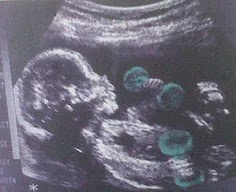In the
UK, stroke is the most common serious neurological disease and a leading cause
of death; there are more than 1.2 million stroke survivors, of whom more than
50% have a disability. Improving outcome from stroke is thus a key healthcare
priority. About 80% of acute strokes are ischaemic, mainly from large vessel
occlusion due to either artery-to-artery embolism or cardiac embolism. Early
treatment is critical to rescue potentially salvageable tissue (‘time is
brain’): safe, rapid and effective arterial recanalisation to restore blood flow
and improve functional outcome remains the primary goal of hyperacute ischaemic
stroke management. Until recently, the only licensed treatment for acute ischaemic
stroke was intravenous thrombolysis with recombinant tissue-type plasminogen
activator (IV r-tPA). However, since November 2014, nine positive randomised controlled
trials of mechanical thrombectomy have been published leading to a revolution
in the care of patients with acute ischaemic stroke due to large vessel
occlusion in the anterior circulation (http://pn.bmj.com/content/practneurol/early/2017/06/30/practneurol-2017-001685.full.pdf).
Intravenous
recombinant tissue-type plasminogen activator (IV r-tPA) 0.9 mg/kg is licensed
for use in the UK up to 4.5 hours post symptom onset. The treatment within 3
hours resulted in good outcome in 9 randomised trials. Rapid delivery of intravenous
thrombolysis after stroke onset is crucial: the number needed to treat for an
excellent outcome roughly doubles from 5 (for treatment within 90 min) to 9
(when treatment is given at 3- 4.5 hours). However, the relative benefit of IV
r-tPA appears to be consistent regardless of age or stroke severity.
Present
guidance and marketing authorisation from Europe and elsewhere recommends the
routine use of alteplase within 4·5 h of stroke onset but, in the USA, the Food
and Drug Administration has approved the use of alteplase only within 3 h of
stroke onset. Marketing of alteplase in some European countries is also
restricted to patients younger than 80 years (despite clinical guidelines based
on observational studies that recommends its use in older patients), whereas no
such age restriction applies in many other countries, including the USA.
The
another research
(http://www.thelancet.com/journals/lancet/article/PIIS0140-6736(14)60584-5/fulltext)
analysis was to explore the extent to which treatment delay affected the effect
of alteplase and to establish whether age or stroke severity affected treatment
effects. These analyses assessing potential effect modification are only
possible with individual patient data. Key secondary aims included estimating
the effect of alteplase on symptomatic intracranial haemorrhage and on 90-day
mortality.
The same
research provides clear evidence for improved odds of a good stroke outcome
when treatment is started within 4·5 h of ischaemic stroke, with earlier
treatment resulting in bigger proportional and absolute benefits. The average
benefit of alteplase might even extend beyond 4·5 h for some patients. The
proportional benefits were similar for patients aged older than 80 years
compared with younger patients, and for patients with minor or severe strokes
compared with other patients. The results support guidelines that recommend use
of alteplase irrespective of age and up to 4·5 h after onset of stroke.
In
the past year, six positive trials of endovascular thrombectomy for ischaemic
stroke have provided level 1 evidence for improved patient outcome compared
with standard care. In most patients, thrombectomy was performed in addition to
thrombolysis with intravenous alteplase, but benefits were also reported in
patients ineligible for alteplase treatment. Despite differences in the details
of eligibility requirements, all these trials required proof of major vessel
occlusion on non-invasive imaging and most used some imaging technique to
exclude patients with a large area of irreversibly injured brain tissue. The results
indicate that modern thrombectomy devices achieve faster and more complete
reperfusion than do older devices, leading to improved clinical outcomes
compared with intravenous alteplase alone. The number needed to treat to
achieve one additional patient with independent functional outcome was in the
range of 3·2–7·1 and, in most patients, was in addition to the substantial
efficacy of intravenous alteplase. No major safety concerns were noted, with
low rates of procedural complications and no increase in symptomatic
intracerebral haemorrhage
(http://www.thelancet.com/action/showFullTextImages?pii=S1474-4422%2815%2900140-4).
There is
little evidence on optimum antithrombotic treatment during and after
thrombectomy. Urgent anticoagulation is not generally recommended in acute
ischaemic stroke due to the risk of intracranial haemorrhage. Aspirin is not
recommended within 24 hours of IV r-tPA but should be started orally (or via
nasogastric tube) within 24-48hours after stroke onset. Randomised trials and
registries do not give consistent data or recommendations regarding
antithrombotic use in mechanical thrombectomy. Some units give a single
procedural dose of heparin, but they avoid antiplatelet medication or further
anticoagulation for 24 hours from stroke symptom onset, and they
suggest follow-up brain imaging with CT or MRI to exclude haemorrhagic
complications, but practice varies. If a stent does not deploy, after 24 hours
and satisfactory clinical progress and follow-up imaging to exclude significant
haemorrhage, then aspirin 300 mg for up
to 2weeks is given, followed by long-term secondary prevention. This will
depend on stroke mechanism: usually clopidogrel or aspirin for
non-cardioembolic and oral anticoagulation for atrial fibrillation or other
cardioembolic sources. If deploy a stent, recommendation is acutely starting treatment
with aspirin and clopidogrel (or equivalent) dual antiplatelet therapy for at
least 3-6months. For stents in patients requiring anticoagulation generally switch
to a single antiplatelet agent for long term secondary prevention.
Resources:










No comments:
Post a Comment